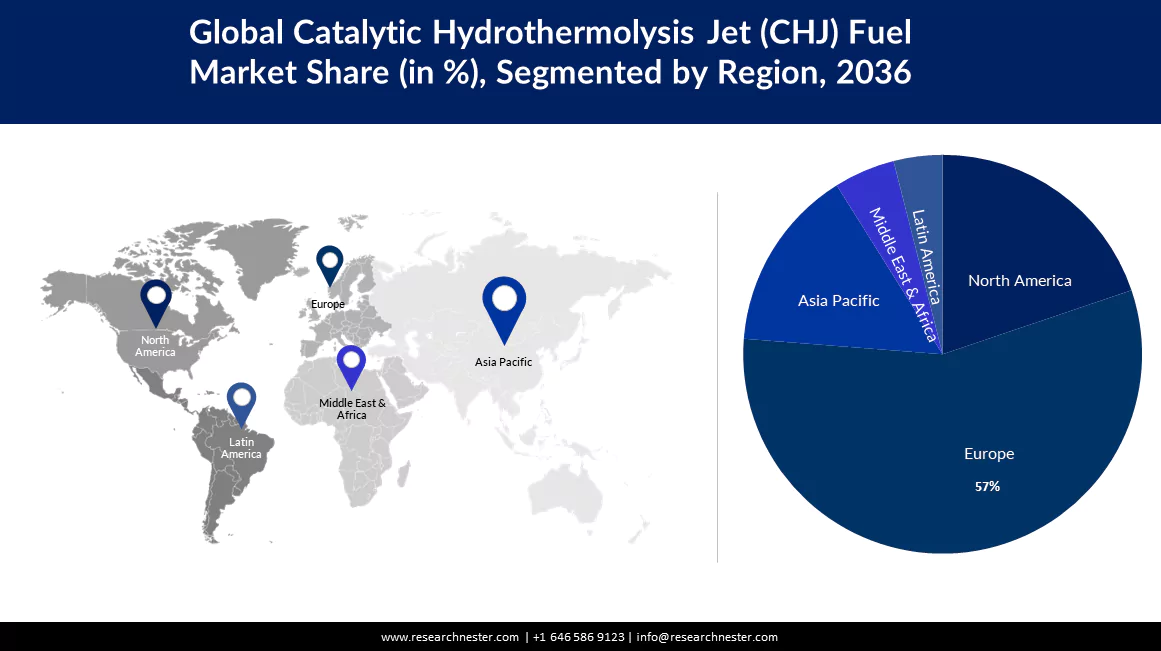

European Market Analysis
The catalytic hydrothermolysis jet (CHJ) fuel market in the European region will increase the most and will have the biggest revenue share of about 57%. This growth will be noticed primarily because of the European government’s initiatives and the use of new rules to use catalytic hydrothermolysis jet (CHJ) fuel. The Commission in Europe accepted in June 2023 new rules setting up the share of biofuels and biogas in blended fuels, co-processed implementing bio-depended and fossil-depended raw components, and that can count towards the Renewable Energy Directive focus for renewables in transport. The Renewable Energy Directive (RED II) confirms that 32% of all energy implementation in the EU, comprising at least 14% of all energy in road and rail transfer fuels, be generated from renewable energy sources (RES) by 2030. In 2021, the European Commission intended modifications to RED II as a part of the Fit for 55 Legislative bundle. Their suggestions ask to transfer the 14% RES focus in transportation to a greenhouse gas severity limitation aim of 13%, better balancing it with the EU’s 2030 climate objectives.
North American Market
The catalytic hydrothermolysis jet (CHJ) fuel market in the North America region will increase massively and will hold the second position due to the increasing use of US catalytic hydrothermolysis jet (CHJ) fuel in the energy industry. The US Energy Information Administration anticipates a rise in jet fuel requirement from 3.11 at present to 4.43 quads by 2050. U.S. jet fuel utilization is highly focused, with the five biggest airports each implementing more than 3.785 billion liters (1 billion U.S. gallons) yearly, and the ten biggest airports by fuel utilization showing 50% of total national jet fuel usage. Persistent dependence on hydrocarbon jet fuel, as other sectors decarbonize, could raise aviation’s delivery to the international CO2 emissions to 20% by 2050. In the United States (U.S.), the world’s biggest aviation market, mixed aviation traffic (i.e., commercial, military, passenger, and cargo) utilizes roughly 83 billion liters (22 billion U.S. gallons) of jet fuel yearly, which contributes to 10% of 2019 domestic transportation greenhouse gas (GHG) secretions and 3% of total domestic GHG Secretions.


Author Credits: Dhruv Bhatia
Copyright © 2024 Research Nester. All Rights Reserved

FREE Sample Copy includes market overview, growth trends, statistical charts & tables, forecast estimates, and much more.
Have questions before ordering this report?